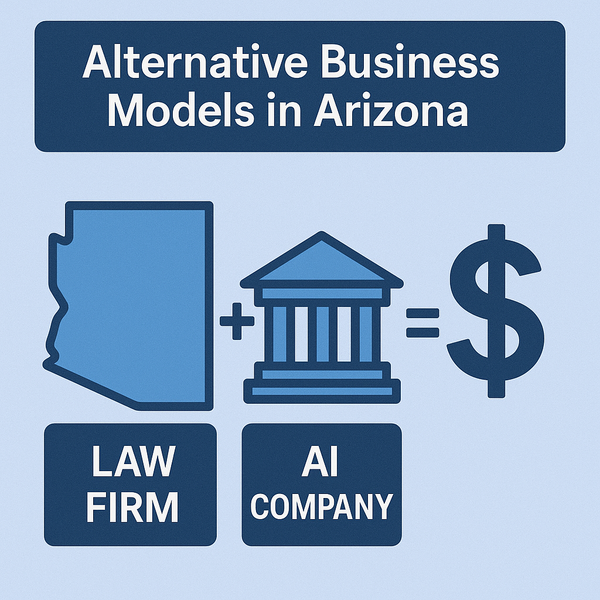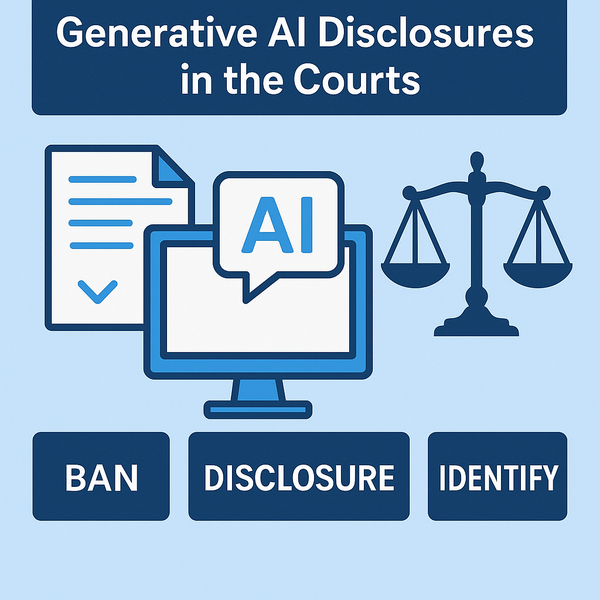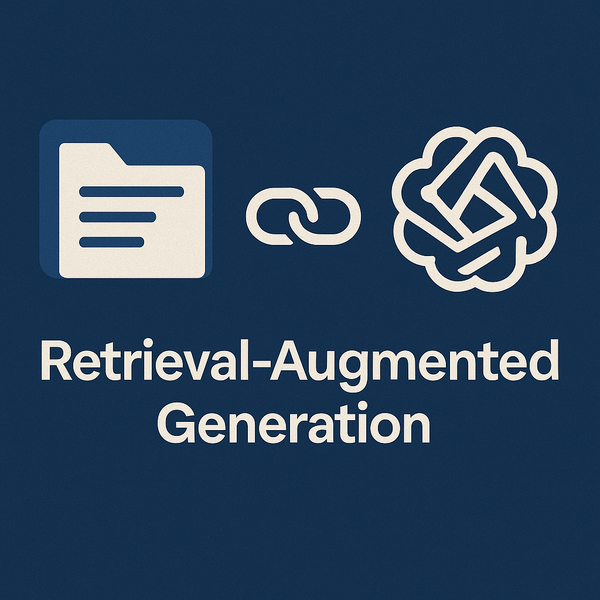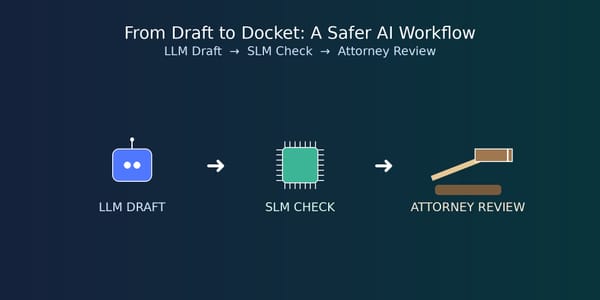AI and the Law--The Bear Case

Splashing some Cold Water on the Hype: Privilege, Compliance, and Why Pilots Fail
TL;DR
The legal duty to protect client information is non‑negotiable and not conducive to reliance on public chatbots. Meanwhile, most enterprise AI pilots aren’t delivering business value. The fix isn't easy. It will require a careful, iterative, and firm-specific approach.
The uncomfortable data point
A new MIT study finds that about 95% of corporate generative‑AI pilots are failing to deliver impact, highlighting a “learning gap” between flexible consumer tools and rigid enterprise deployments. Successful firms tend to buy specialized solutions or partner well, while many ad hoc or in‑house builds stall in experimentation.
For your law firm, this is a signal: go slow on vanity pilots, go fast on operational wins.
The legal bar is not the same for other businesses
Law firms cannot compromise on confidentiality, competence, supervision, protective orders and fee issues when utilizing AI. This makes it very difficult to simply pull in a consumer or commercial application and give it your client's data. A firm needs specific use-case applications along with clear and cogent policies to ensure that all employees are compliant with client data, document production, research requirements, and, if necessary, AI disclosures to clients and courts. AI can provide massive benefits, but all firms must take specific care at all stages of implementation.
Nine common failure modes (and potential fixes)
- Wrong environment
Problem: Uploading client information to a consumer chatbot.
Fix: Use your own open source models. If that isn't possible, use enterprise/Team/API workspaces that allow no training on your data, admin controls, SSO/MFA, and retention settings you control. - Privilege & confidentiality leakage
Problem: Client identities and sensitive facts flow to third parties.
Fix: Mask/redact before processing; prefer retrieval over fine‑tuning; restrict who can unmask. - Protective orders ignored
Problem: A “quick summary” violates a confidentiality stipulation.
Fix: Use in house open source models. If not possible, confirm vendor status under the order and limit processing to allowed systems. - Hallucinations & mis‑citations
Problem: Strongly worded but weakly supported claims.
Fix: Narrow prompts; require linked passages from the record; reviewer QA gate before anything leaves the team. - Shadow AI
Problem: Attorneys use personal accounts off‑policy.
Fix: Approve usable tools, publish simple playbooks, and turn off what you don’t allow. - No measurement
Problem: “It felt faster” is not evidence.
Fix: Establish a baseline (time/defects) and require pilots to beat it. - Overbroad use cases
Problem: “AI for everything.”
Fix: Start with two use cases for a pilot: e.g., deposition summaries and diligence triage, with clear inputs/outputs and QA checklists. - Data chaos
Problem: Documents everywhere; no source of truth.
Fix: Point retrieval at a canonical document store and tag by matter. - Client communication
Problem: Surprises on methods or fees.
Fix: If AI use is material to the work or affects fees, explain it and document the conversation. (Model Rules 1.4, 1.5.)
Why most AI pilots fail (and how legal can do better)
What the studies say: Many pilots die in the gap between flexible, general tools and locked‑down enterprise stacks. Leaders who partner or buy specialized tools fare better than those trying to build everything from scratch. Budgets often flow to flashy front‑office tools while the best ROI sits in back‑office automation (internal processes, outsourcing reduction).
What that means for law: Prioritize operational workflows that produce measurable value and low risk. Start with the most repeated tasks in your firm and only expand after success.
A compliant pilot plan you can run this quarter
Scope (2 use cases):
- Litigation: “Summarize depositions with page/line cites + contradictions list.”
- Transactions: “Summarize 20 agreements with clause table + red‑flag notes.”
Controls (light but real):
- Local open source model or enterprise workspace/API; training off; retention configured.
- Mask direct identifiers; keep reversible map inside your document management system.
- Prompt wrapper that says “do not infer identities; cite passages.”
- QA gate: reviewer signs a six‑box checklist.
- Log: who/what/when/model/config + hashes of inputs/outputs.
Success criteria:
- at least a 30% decrease is cycle time and no increase in defects (missed cites, incorrect quotes).
- Attorney satisfaction of at least 4 out of 5.
- Zero policy violations.
ABA Formal Opinion 512 provides the ethical backdrop (competence, supervision, confidentiality, communication, fees). Your controls operationalize it.
Pilot checklist
- [ ] Local open source model or Enterprise/Team/API workspace (no training; retention set).
- [ ] Masking step + reversible map stored in DMS.
- [ ] Narrow prompts with required citations to the record.
- [ ] Reviewer QA checklist completed and logged.
- [ ] Client informed where material to methods or fees.
- [ ] Baseline recorded; pilot beats baseline or it stops.
Bottom line
You don’t need a moonshot. You need two compliant wins that save time and hold up to scrutiny. Do that and you can turn the bear case into a bullish result.




